Lights&Lighting features a full range of emergency lighting: signage lighting; anti-panic and escape route lighting; central and self-contained systems, etc. We do not compromise on your safety: excellent recognisability, optimum light distribution and reliable electronics ensure that you will find the safest escape route even in the most difficult of circumstances.
Discover our full emergency lighting range
Emergency luminaires consist of two major categories. On the one hand, luminaires with pictograms for safety signs. On the other hand, luminaires for lighting in emergency situations, with a distinction between escape route lighting and anti-panic lighting.
Types of emergency lighting
Safety signs require specific luminaires. Several solutions are possible for escape route and anti-panic lighting.
Specific luminaires for emergency lighting
These luminaires have been specially designed for escape routes and/or anti-panic lighting. Photometric optimisation allows the luminaires to be installed at large intervals, so that only a limited number are needed to ensure compliance with the standard. The luminaires are fitted with specific electronics for optimal start-up (and therefore long service life) of the lamp and low power consumption.

Anti-panic lighting Escape route lighting
LED modules built into luminaires for lighting
A LED module consists of a light source with LEDs, an electronic control and a battery set (in self-contained systems). It is unobtrusively integrated into a luminaire. In emergency mode, this LED provides the necessary light. Since the LED light is spread using a clever optical system, you will satisfy safety standards with a limited number of LED modules. The LED in the module is insensitive to switching and furthermore boasts a very long service life, as a result of which you will never have to replace them in theory.
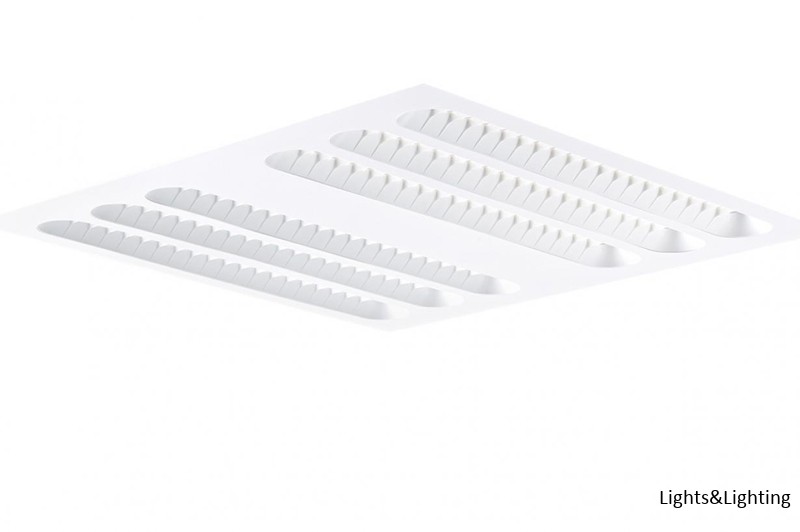
Emergency units built into luminaires for lighting
Here we also use general luminaires to give off light in an emergency situation by connecting them to an external emergency supply or by integrating an emergency unit. Such an emergency unit consists of electronics and a battery set. With this solution no separate emergency lighting is visible, as the same light source is used for both regular lighting and emergency lighting. The light distribution is that of the regular luminaire and is therefore not ideal for emergency lighting. To comply with the standard, you will probably have to install a comparatively large number of emergency units.
Central or self-contained emergency lighting
The emergency lighting takes over the function of regular lighting in the event of a power outage. Emergency lighting can be powered in two ways. Depending on where the energy source is located, we refer to a centralised or self-contained system.
Central system
In a centralised system, the power comes from a central supply in an emergency situation. Luminaires for a centralised system are available in 230V, alternate and direct current, or for the 24V system EBS Compact.
Self-contained system
In a self-contained system, each emergency luminaire is fitted with its own rechargeable battery. Every self-contained luminaire Works autonomously and reacts independently to voltage drops.
Autonomy
During a power outage, the emergency luminaire will be switched on for a specific period. The autonomy of a luminaire is determined by the energy of the integrated battery. For most applications an autonomy of one hour is sufficient. Versions with a three-hour autonomy are useful when evacuation requires more time.
Automatic self-test
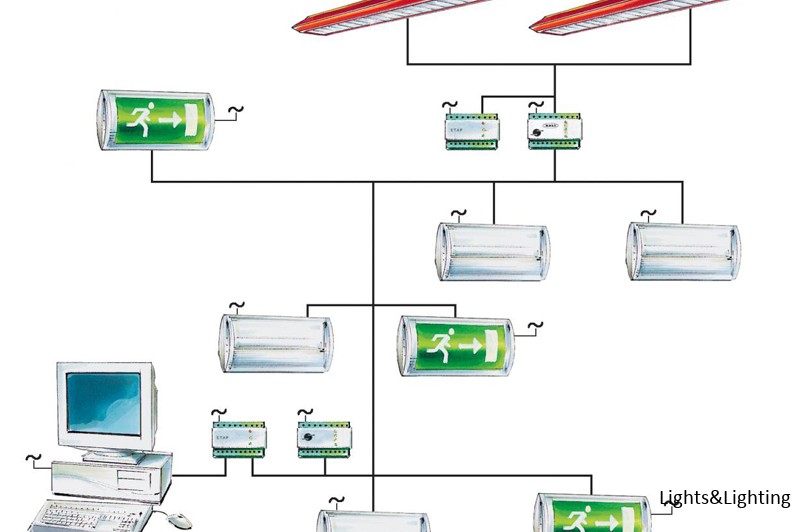
A well-oiled emergency lighting installation relies on regular checks. At Lights&Lighting each self-contained luminaire is fitted with a European Safety Test (EST+), which ensures extensive and frequent checks in compliance with IEC 62034.
Luminaires with an automatic self-test guarantee increased safety and offer significant time and money savings during functional testing. Without a self-test you are in fact required under the standard to regularly switch off the voltage and to check whether the luminaires still switch on after the specified battery duration has elapsed.
Emergency lighting standards
When and how emergency lighting must be applied is laid down in legislation. In addition, numerous standards and regulations apply to the technical execution. European standard EN 1838 (lighting applications – emergency lighting) describes the photometric properties emergency lighting has to satisfy to complete the task.
Emergency lighting (B)
This is the lighting that is switched on once regular artificial lighting ceases to function after the power outage. In this way people can complete their work safely and without panicking leave the building.
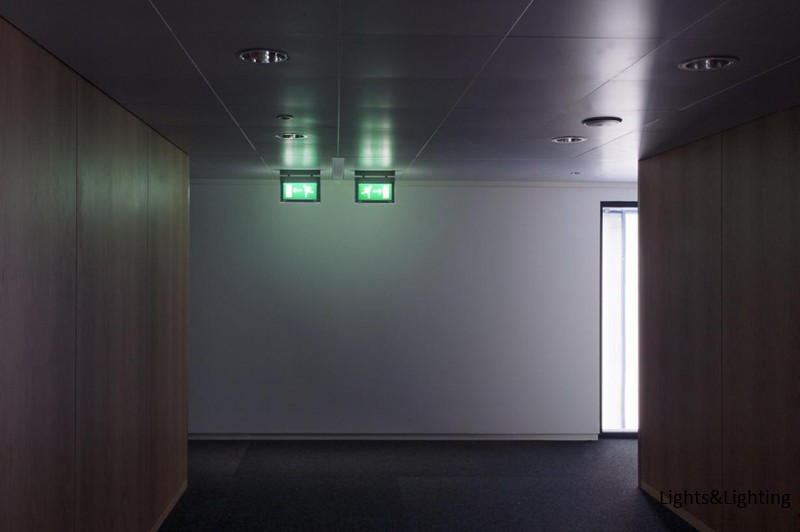
Escape route lighting
Safely evacuating a building is only possible if the escape routes are efficiently illuminated, including the outside of the final exit.
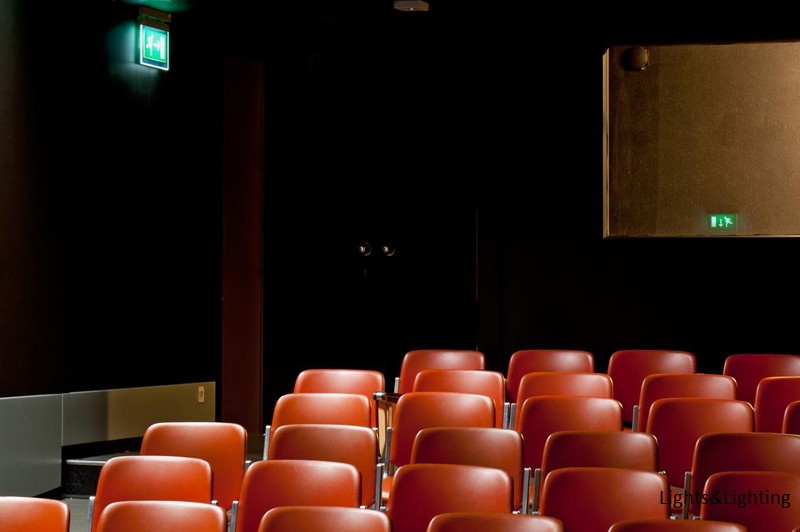
Illuminated safety signs
Safety signs point to the nearest escape route. High visibility and fast recognition of safety signs to escape routes are of vital importance in emergency situations. To this end, due to their universal nature, unambiguous pictograms have been identified in ISO 7010, which contribute to the smooth and safe evacuation of the building. In addition, by using these pictograms, escape routes can be recognised in the same way in every building. Colours must comply with ISO 3864.
Backlit signs can be more easily recognised at a greater distance than externally illuminated signs. EN 1838 includes a formula that determines the visual range (d) depending on the height of the pictogram (h) and a constant value (z), whereby:
z = 100 for externally illuminated signs
z = 200 for backlit signs
d = z x h
[zichtbaarheid_h-z]
Lights&Lighting offers a full range of symbols and pictograms in compliance with European guidelines. Lights&Lighting also produces an extensive range of information pictograms, identical in style, to identify amenities such as telephone, lift, etc. We can also design personalised pictograms for you, in tune with your house or building style, for example for crèches or conference rooms.
Pictograms Lights&Lighting
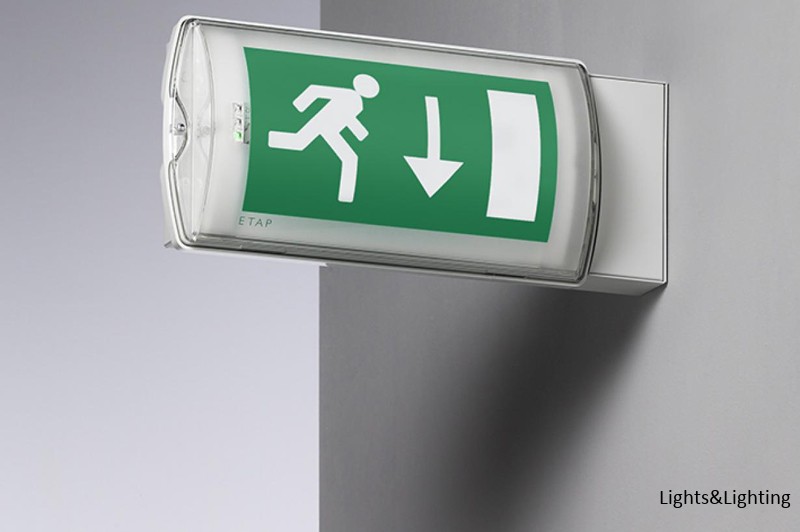
Lighting of workstations with increased risk
The lighting of workstations with increased risk (10% of the normal required level, never less than 15 lux) is aimed at ensuring safety in locations where a potentially dangerous activity is carried out. Dangerous workstations include, for example places with high temperatures, were harmful vapours are released, where moving equipment is stored or where high-voltage is used.
dangerous activities
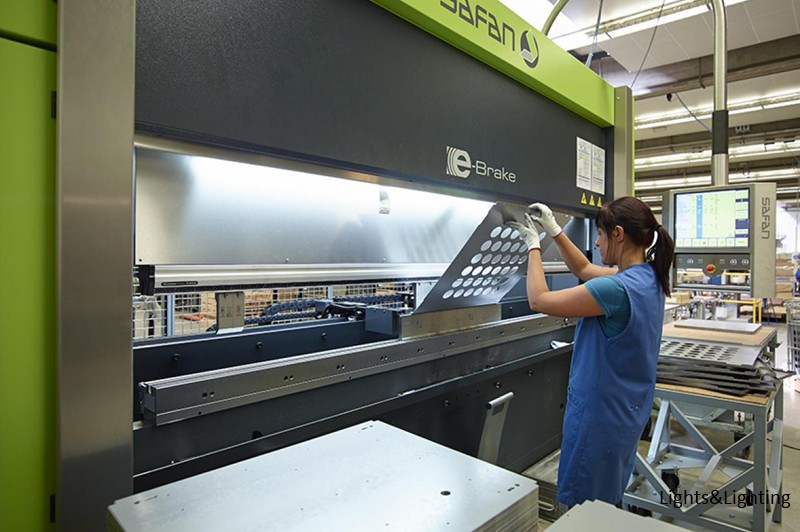
Uniformity
EN 1838 also specifies the minimum uniformity of the emergency lighting: anti-panic lighting (1/40), escape route lighting (1/40), lighting in workstations with increased risk (1/10) and signage (1/10) (see p 332 for photometric concepts).
European application standard EN 1838 illustrated
This illustration shows the required minimum horizontal illuminance on the floor depending on location and function in a building. In addition to escape routes and (emergency) exits, EN 1838 emphasises the following locations, which must be fitted with emergency luminaires:
At every exit intended for use in the event of an emergency
Near staircases in order for each tread to be directly illuminated
Near any other difference in level
Required emergency exits and signage
With every change in direction
Wherever corridors cross
On the outside of and near every exit
Near every first-aid station
Near every component of all fire fighting equipment and smoke detectors.
Illustration of emergency lighting standard EN 1838
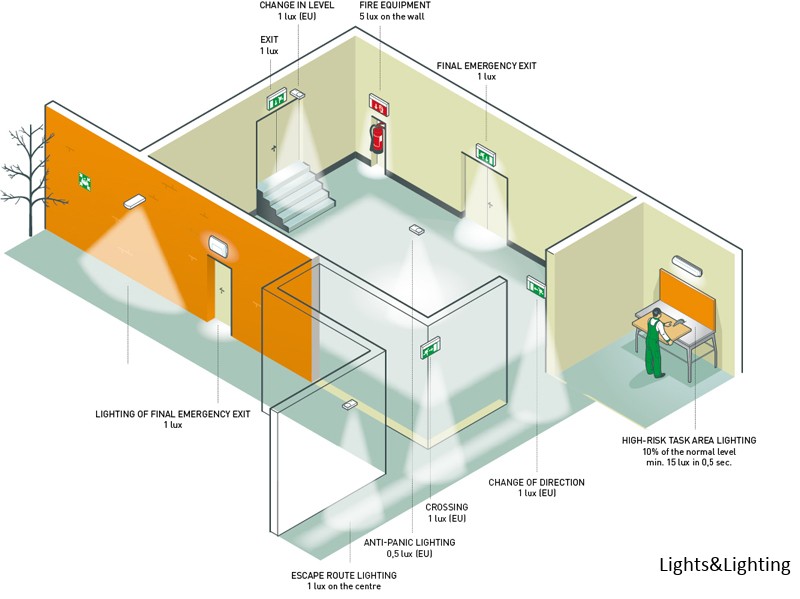
European standard EN 50172
European standard EN 50172 requires, inter alia, a monthly functional test and an annual autonomy test for the emergency lighting, as well as logging of the checks and maintenance. With our self-testing luminaires with EST+ and their intelligent control and management system for self-contained emergency lighting Lights&Lighting Safety Manager (ESM), you will more than satisfy this European standard.